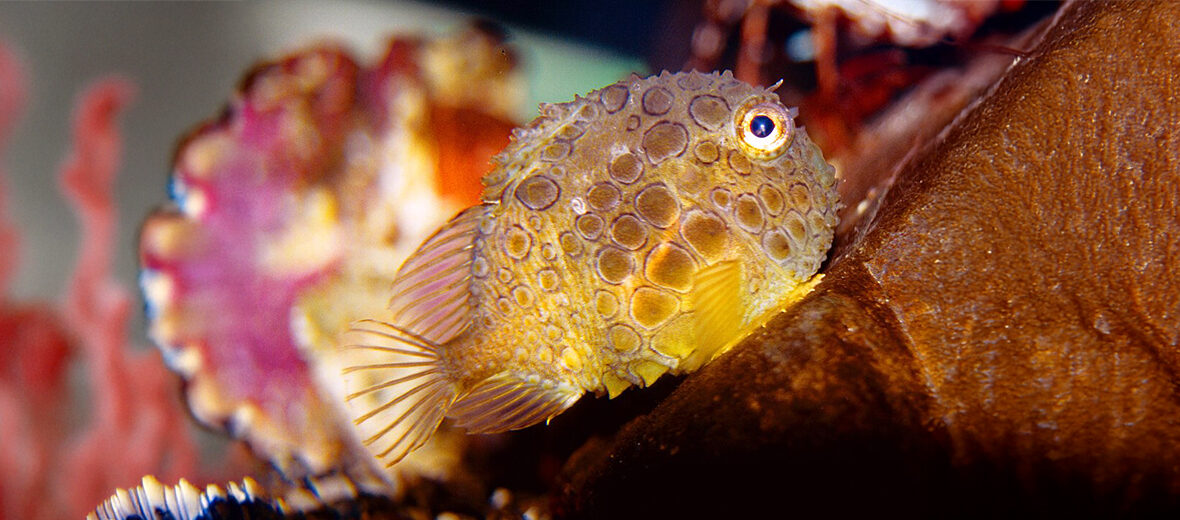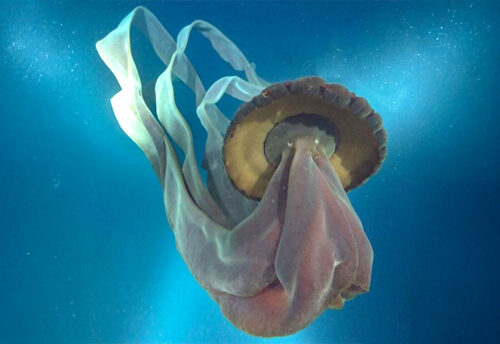
The Pacific spiny lumpsucker is a diminutive, globular-shaped fish from the family Cyclopteridae, which includes all lumpfish species. While they don’t have any major threats to their survival, they are subject to microplastic pollution. The IUCN lists these adorable little fish as Least Concern yet their population trend is unknown at this time. They hail from the coastlines of the Pacific Northwest, including Canada and the United States.
First the Stats…
Scientific name: Eumicrotremus orbis
Weight: Up to 3.53 ounces
Length: Up to 7 inches, but up to 2 – 3 inches is more common
Lifespan: Up to 3 years
Now on to the Facts!
1.) With their wide mouth, large lips, and protruding eyes, these little fish are like the pugs of the sea.
2.) Their pelvic fins have evolved into a large, fringed suction cup, That allows them to attach to surfaces such as kelp or rocks.
3.) The suction cup adaptation also assists them in staying put seeing as they lack a gas bladder, aka swim bladder.
4.) Rather than having scales, their body is covered in cone-shaped plates, called tubercles.
5.) These little fish come in a range of colors including brown and green, often times with yellow or orange highlights. Females are typically a dull green in color, while the males are dull orange to reddish brown color.
But wait, there’s more on the Pacific spiny lumpsucker!
6.) When threatened, they swim about aimlessly, significantly disadvantaged by their inefficient swimming ability.
7.) Spiny lumpsuckers, rather than relying on swimming away from danger, depend highly upon camouflage to keep safe.
Did you know…?
Not shying away from divers, they will often feed right from the hands of people offering them a tasty meal.
8.) They tolerate a wide range of habitats, including eelgrass beds, kelp patches, rocky reefs, and various algae growths.
9.) These fish can be found at depths of up to 500 feet.
10.) Slower moving crustaceans, polychaete worms, and mollusks are all on the menu.
But wait, there’s still more on the Pacific spiny lumpsucker!
11.) Spawning takes place between July – October.
12.) Females usually lay up to 200 eggs on rocks or sheltered holes and the male then fertilizes them.
Did you know…?
Due to climate change, rising sea levels and warmer water temperatures threaten their habitats, and the species’ over all survival.
13.) Once the eggs are fertilized, the male attaches himself to a nearby surface where he tends to the eggs by defending them from predators and circulating water over them with his fins to supply them with ample amounts of oxygen.
14.) The male keeps a watchful eye on the eggs for up to 8 weeks, until they hatch. The fry then disperse to start life on their own.
15.) Pacific cod, sablefish, sculpins, and lancefish are all known predators of these lumpsuckers. Crabs, sea stars, and small fish also prey on lumpfish eggs.
Now a Short Pacific Spiny Lumpsucker Video!
Be sure to share & comment below! Also, check out the Critter Science YouTube channel. Videos added regularly!
Want to suggest a critter for me to write about? Let me know here.
Some source material acquired from: Wikipedia & IUCN
Photo credit: NOAA




